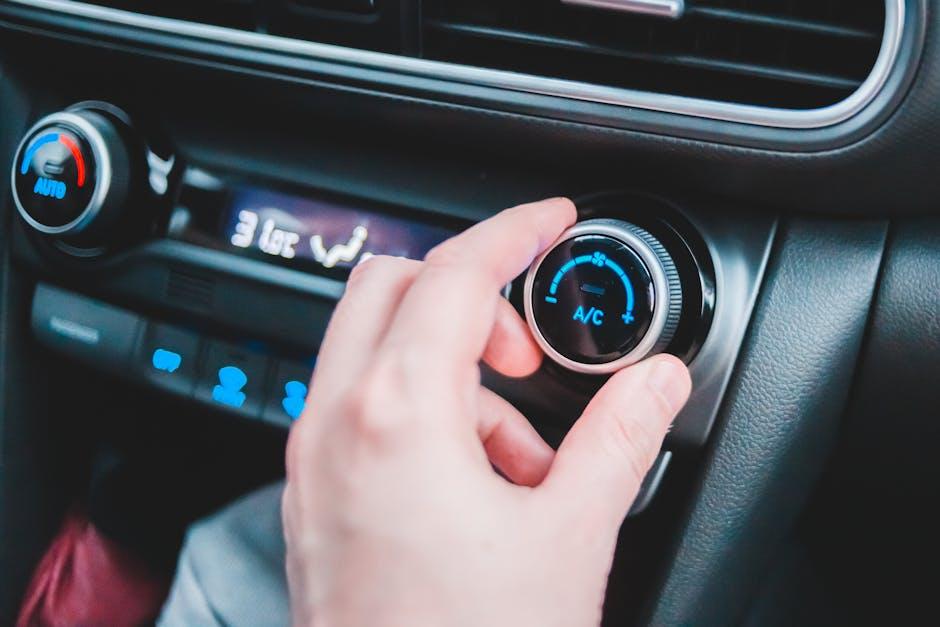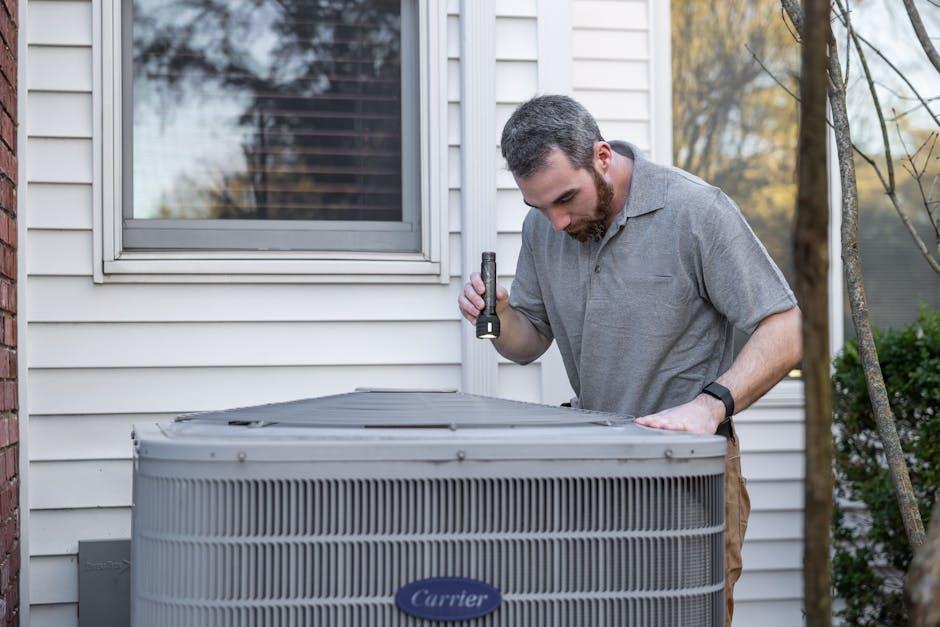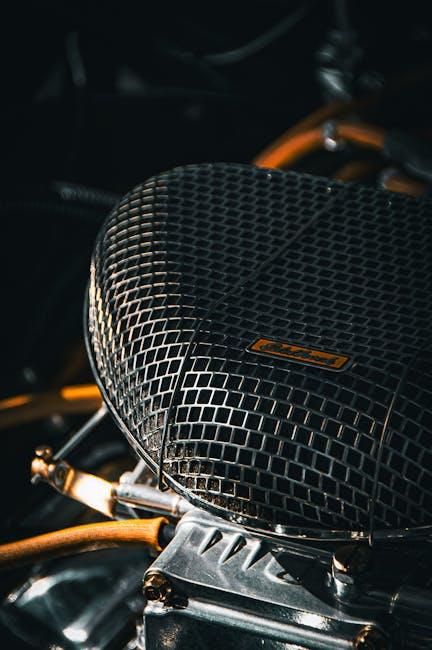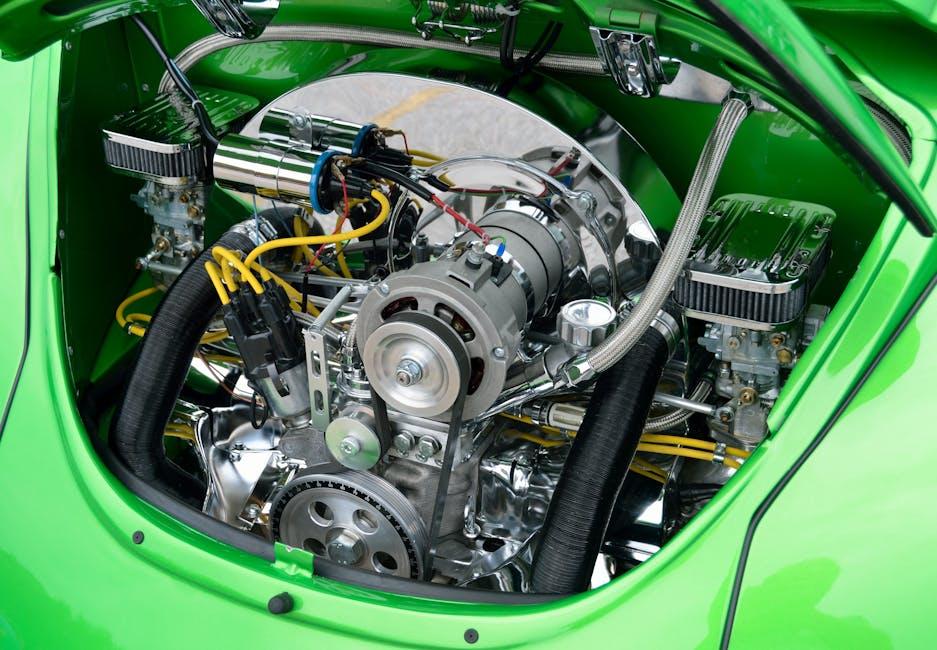Your car’s cooling system is like the unsung hero of the engine bay—quietly working behind the scenes to keep temperatures just right, preventing the heart of your vehicle from overheating. Without it, those long drives could quickly turn into costly repairs and roadside breakdowns. Understanding how to maintain your car’s cooling system isn’t just a matter of convenience; it’s essential for ensuring your trusty vehicle runs smoothly and reliably. In this article, we’ll explore practical steps and tips to help you keep your cooling system in peak condition, so you can enjoy every journey with confidence and peace of mind.
Table of Contents
- Understanding the Importance of Your Car’s Cooling System
- Identifying Common Cooling System Problems Early
- Choosing the Right Coolant for Optimal Performance
- Step-by-Step Guide to Flushing and Refilling Your Cooling System
- Inspecting and Replacing Radiator Hoses and Clamps
- Tips for Maintaining Your Radiator and Cooling Fans
- Q&A
- Insights and Conclusions

Understanding the Importance of Your Car’s Cooling System
Keeping the engine at an optimal temperature is crucial, and this depends heavily on the cooling system. It works behind the scenes, preventing your car from overheating and avoiding costly damage such as warped cylinders or blown head gaskets. A well-functioning cooling system also improves your vehicle’s efficiency, ensuring that your engine runs smoothly regardless of external conditions. Ignoring this system can lead to unexpected breakdowns, especially during long drives or hot weather.
Recognizing the vital components that make up your car’s cooling system helps in proper maintenance. These include:
- Radiator: Dissipates heat from the coolant.
- Water Pump: Circulates coolant throughout the engine.
- Thermostat: Regulates coolant flow based on temperature.
- Coolant: The fluid that absorbs and transfers engine heat.
| Component | Role | Maintenance Tip |
|---|---|---|
| Radiator | Heat exchanger | Check for leaks & flush yearly |
| Water Pump | Circulation | Listen for noises & replace if worn |
| Thermostat | Flow control | Replace if engine overheats |
| Coolant | Heat absorption | Maintain correct level & mix |

Identifying Common Cooling System Problems Early
Spotting the signs of a struggling cooling system before it spirals into costly repairs can save you both money and stress. Keep an eye out for unusual temperature gauge readings that spike quickly or linger in the danger zone. Another red flag is a strong sweet smell, which could hint at a coolant leak. Sometimes, a white, fluffy residue around hoses or the radiator cap also signals escaping coolant. Don’t ignore these subtle clues—early detection is your first line of defense.
In addition to monitoring for symptoms, regular visual inspections can uncover hidden issues. Check for:
- Cracked or bulging hoses that indicate brittleness or pressure buildup
- Low coolant levels that may point to leaks
- Discolored or rusty coolant signaling contamination or corrosion
| Symptom | Potential Cause | Recommended Action |
|---|---|---|
| Overheating engine | Thermostat failure | Replace thermostat immediately |
| Coolant puddle under car | Leaking hose or gasket | Inspect and repair leakage |
| Frequent low coolant | Hidden leak or reservoir crack | Pressure test system |

Choosing the Right Coolant for Optimal Performance
Selecting the perfect coolant for your vehicle is crucial to ensure your engine runs smoothly and avoids overheating. Different cars require different formulations, so it’s essential to consult your owner’s manual or a trusted mechanic before making a decision. Coolants usually fall into categories such as inorganic additive technology (IAT), organic acid technology (OAT), and hybrid organic acid technology (HOAT), each designed to protect engine components in specific conditions. Opting for a coolant that matches your vehicle’s specifications not only avoids corrosion but also prolongs the life of the radiator and water pump.
When evaluating your options, consider the climate you drive in as well. Here’s a snapshot of key coolant features to think about:
| Coolant Type | Ideal Temperature Range | Corrosion Protection | Recommended for |
|---|---|---|---|
| IAT | -34°F to 265°F (-37°C to 129°C) | Moderate | Older vehicles with traditional engines |
| OAT | -40°F to 255°F (-40°C to 124°C) | High | Modern vehicles with aluminum engines |
| HOAT | -34°F to 265°F (-37°C to 129°C) | High | Wide range of vehicles, mix of old and new tech |
- Always avoid mixing different coolant types, as this can cause chemical reactions leading to sludge and poor thermal efficiency.
- Regularly check coolant levels and quality to catch any signs of contamination or degradation early.
- Consider environmental factors such as extreme heat or cold, which may necessitate specific coolant additives.

Step-by-Step Guide to Flushing and Refilling Your Cooling System
Begin by ensuring your vehicle is completely cool before starting. Locate the radiator drain valve and carefully open it to let the old coolant drain into a suitable container. While the system drains, remove the radiator cap and flush the radiator with distilled water to eliminate residual contaminants. It’s essential to wear gloves and dispose of used coolant responsibly, as it is toxic to both humans and pets. To fully flush the system, close the drain valve, fill the radiator with distilled water, run the engine until it reaches normal operating temperature, then drain again.
Once the system is drained and cleaned, you can refill it with the appropriate mixture of antifreeze and distilled water. Always refer to your vehicle’s manual for the correct coolant type and ratio. Gradually pour the new mixture into the radiator until full, then fill the overflow reservoir to the recommended level. After securing the radiator cap, start the engine and let it run while monitoring for air bubbles—this indicates trapped air that needs to be bled out. Checking and topping up the coolant level over the next few days ensures your cooling system remains in peak condition.
| Step | Tool/Material Needed | Tip |
|---|---|---|
| Drain Old Coolant | Drain pan, Gloves | Do this on a cool engine |
| Flush System | Distilled water, Funnel | Run engine to circulate water |
| Refill Coolant | Proper coolant mix, Funnel | Consult vehicle manual |
| Bleed Air | None | Watch for bubbles in radiator |

Inspecting and Replacing Radiator Hoses and Clamps
Regularly assessing the condition of your radiator hoses and clamps is vital in warding off potential cooling system failures. Over time, hoses can become brittle, crack, or develop soft spots due to constant exposure to high temperatures and pressure fluctuations. When inspecting, look for signs such as bulges, leaks, or discoloration. Pay close attention to the hose ends where they connect to the radiator or engine — these areas are prone to wear. Likewise, clamps should fit snugly without corrosion or rust, ensuring a leak-proof seal that maintains pressure within the cooling system.
Replacing radiator hoses and clamps isn’t just a maintenance task; it’s a simple upgrade to your vehicle’s reliability. To streamline the process, here are some best practices:
- Choose quality parts: Opt for hoses made from durable materials like EPDM rubber and stainless steel clamps for lasting performance.
- Cool engine first: Always allow the engine to cool completely before commencing work to avoid burns.
- Proper tightening: Avoid overtightening clamps to prevent hose damage; a firm, secure fit is enough.
- Double-check connections: After installation, run the engine and inspect for leaks or loose fittings.
| Common Hose Problem | Symptom | Recommended Action |
|---|---|---|
| Cracking/Splitting | Coolant leakage, overheating | Replace hose immediately |
| Soft or Spongy Texture | Bulging under pressure, swelling | Replace to avoid rupture |
| Loose Clamp | Visible coolant seepage | Tighten or replace clamp |
| Corrosion on Clamp | Potential clamp failure | Replace clamp |

Tips for Maintaining Your Radiator and Cooling Fans
Regular inspection of your radiator and cooling fans is crucial to prevent overheating and costly repairs. Start by checking the radiator for any visible cracks, leaks, or corrosion, and ensure the cap seals properly to maintain optimal pressure. Cleaning the radiator fins with a gentle brush or compressed air removes debris that can block airflow. For cooling fans, verify that they turn on when the engine reaches a high temperature or when the air conditioning is running. A malfunctioning fan can cause uneven cooling, leading to engine stress.
Pro tips for upkeep include:
- Flushing the radiator periodically to remove build-up of rust and sediment
- Inspecting the fan belts for wear and replacing them if frayed or cracked
- Checking electric fan motors and relays to ensure proper operation
- Keeping nearby components clear of dirt and leaves for efficient airflow
| Maintenance Task | Recommended Frequency | Benefit |
|---|---|---|
| Radiator Flush | Every 2 years | Prevents clogging and overheating |
| Cooling Fan Check | Every 6 months | Ensures proper cooling function |
| Belt Inspection | Every oil change | Avoids unexpected belt failure |
Q&A
Q&A: How to Maintain Your Car’s Cooling System
Q1: Why is my car’s cooling system so important?
A1: Think of your car’s cooling system as the unsung hero of your engine. It keeps everything from overheating by circulating coolant to absorb and dissipate heat. Without it, your engine could seize up, leading to costly repairs—or worse.
Q2: What are the key components of the cooling system I should know about?
A2: The main players include the radiator, coolant (antifreeze), water pump, thermostat, hoses, and the cooling fan. Each plays a vital role—radiator cools the fluid, thermostat regulates temperature, and the pump circulates coolant through the engine.
Q3: How often should I check my car’s coolant level?
A3: It’s a good habit to peek under the hood at least once a month. Coolant levels can drop due to leaks or evaporation. Always check when the engine is cool to avoid burns and keep the fluid between the “min” and “max” marks.
Q4: Can I just top off with water if coolant is low?
A4: While a splash of water in an emergency might save you temporarily, it’s not a long-term fix. Coolant contains special additives that prevent freezing, boiling, and corrosion—plain water doesn’t.
Q5: How do I know if my cooling system needs flushing?
A5: Signs include rusty or discolored coolant, flaky deposits in the radiator, or if it’s been more than 2-3 years since your last flush. Flushing clears out sediment and old antifreeze to keep the system efficient.
Q6: Are there any telltale signs of cooling system trouble I should watch for?
A6: Definitely. Overheating gauges, visible leaks, sweet smells (coolant), steam from under the hood, or frequent need to add coolant are red flags indicating it’s time for a checkup.
Q7: Should I inspect hoses and belts regularly?
A7: Absolutely. Hoses can crack or bulge, causing leaks, and belts power the water pump; if they snap, cooling circulation stops. Look for wear, softness, or cracks every few months.
Q8: Can regular maintenance prolong the life of my cooling system?
A8: Without a doubt. Regular checks, timely coolant replacement, and prompt repairs keep your cooling system humming, preventing overheating and extending engine life.
Q9: When in doubt, should I DIY or see a mechanic?
A9: Simple checks and top-offs are great DIY tasks, but complex issues like leaks, thermostat replacement, or flushing the system are best handled by pros to avoid mistakes.
Q10: Any bonus tips for keeping my cooling system in top shape?
A10: Sure! Use the recommended coolant type for your car, avoid mixing different brands unless compatible, never open the radiator cap when the engine is hot, and listen to your car—unusual noises or smells are your first clues something’s amiss.
Insights and Conclusions
In the intricate dance of metal and motion that keeps your car alive, the cooling system plays a silent yet essential role. By giving it the care and attention it deserves—regular checks, timely flushes, and mindful upkeep—you’re not just preserving your engine’s health; you’re extending the lifespan of your journey. Remember, a well-maintained cooling system is the unseen guardian that keeps your ride running smoothly, mile after mile. Drive smart, stay cool, and let your car’s heart beat steady for the road ahead.

1 Comment
tekfyo